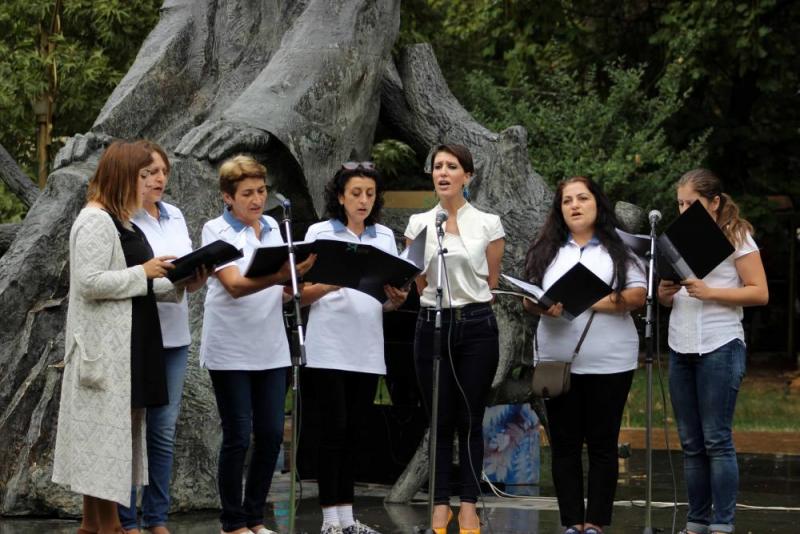Four years ago I presented the project “The performance and recordings of songs written by Komitas”, which is continuous. It’s natural that you can’t always predict the success of the work you’ve started, but you expect it. I didn’t think where it would lead me: for many days I searched for and found written national songs in Komitas’ tomes. I first assimilated them, tried to guess how those songs were performed, what they looked like when performed by the people who were the creators. After having imbibed them well, I found performers, worked with them.
This is how I started and have continued so far to discover, restore, perform, record and spread the songs written by Komitas. We also perform and record the national songs that are not popular and are not traditionally performed. I had no idea that this project would become one of the most important works of my job and life. It is a work with love and importance, a large area to study, explore — just manage to do it.
During these years a great number of songs have been performed and recorded.
National rituals are my element, I am constantly in research. how to restore, bring to life, if not in its original form, at least in accordance with the thoughts, perception, psychology, and belief of a modern Armenian. And when it was decided to carry out the wedding ceremony of the EduComplex teachers Khoren Hazarumyan and Lusine Abrahamyan, I was filled with immense enthusiasm. The Armenian traditional wedding ritual was to be studied. We were to find songs suitable for the ritual actions and learn what was unknown, make them available to everyone. We recorded songs of wedding ritual: songs praising the bridegroom, songs praising the outfit of the bridegroom’s horse, songs praising the ritual tree, wedding hymns, and love songs.
The songs performed at the ascension ritual were supplemented with the songs “Hey, I’m gyul”, “Jan!, flower, jaan!”, and the series of dance songs were completed with recordings “Abaran karot a”, “Ah, Loti Maran”, “Ernek yes Tsar Eghnei”, and “Saren Kugas”.
The spread of songs in the EduComplex is carried out by musicians who teach the students of different age groups, and teachers, both at the music lessons and in the general morning trainings, and also during the Friday concerts. In the college, from the beginning of the school year, not only dance songs were taught regularly, but also educational videos were created as a short-term project, one of which was “Ah, Loti Maran”.
In the program of one of the Friday Concerts, the responsibility for which was taken by the College, the songs by Komitas were included. The Marble Hall of our Mother School was full of students and teachers, and it was clear that they not only knew the songs, but also loved them them and performed them in the national spirit. The “Sebastatsiner” vocal ensemble plays an important role in the dissemination of these songs, performing them in the polyphonic version during various holidays and project performances.
Translated into English by Milena Manucharyan
Editor․ Yura Ganjalyan

